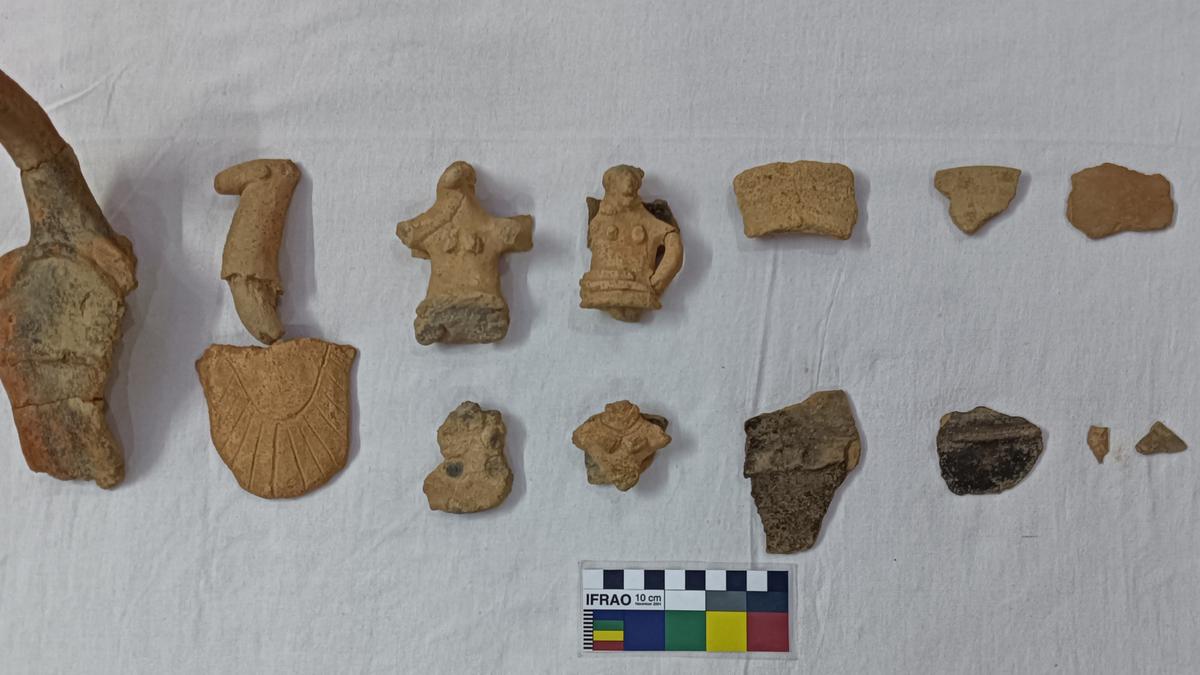
Ancient terracotta figurines found during archaeological explorations at megalithic dolmen site near Moodbidri
The Hindu
Unique terracotta figurines in different states of preservation, with bone and iron pieces have been found in recent archaeological explorations conducted in the megalithic dolmen site at Mudu Konaje, near Moodbidri, in Dakshina Kannada
Unique terracotta figurines in different states of preservation, with bone and iron pieces have been found in recent archaeological explorations conducted in the megalithic dolmen site at Mudu Konaje, near Moodbidri, in Dakshina Kannada.
According to T. Murugeshi, retired Associate Professor, Department of Ancient History and Archaeology at Mulki Sunder Ram Shetty College, Shirva in Udupi district, the figurines were datable to 800-700 BC.
Of the eight figurines found, there are two cow bovines, one mother goddess, two peacocks, a horse (?), a hand of a mother goddess, and an unknown object.
Mr. Murugeshi, who was involved in the explorations, said in a release on Monday that the megalithic site at Mudu Konaje was discovered and reported by historian and researcher Pundikai Ganapayya Bhat in the 1980s. The site is located on the Moodbidri- Shirthady Road, about 8 km from Moodbidri.
“It was the biggest megalithic dolmen site which consisted nine dolmens on the slope of a stone hill. But only two dolmens are intact and the rest of the burials are ruined,” Mr. Murugeshi said.
Megalithic culture is known by its different types of burials and use of iron in India. Dolmen is one among them. Under a dolmen, huge stone slabs known as orthostats were erected in clockwise order, which created a square room. This square chamber was closed by an another huge stone slab as a cap stone. Generally, on the Eastern slab, a round or U-shaped entrance known as port-hole was created. It was known by different names in South India like Kalmane, Pandavara Mane, Moriyara Mane, Moriyara Betta, Panara Arekallu, Madmal Gunda, Kandi Kone, Kottya, Toonth Kal, Pandavara Kal and so on which reveals its popularity among the common people, the release said.
“The terracotta figurines found at Mudu Konaje in a megalithic context are a rare find of India. They were found inside the surface of dolmens, which was disturbed by treasure hunters. The cow bovines found in the dolmens helps to determine the chronology of the dolmens. Terracottas found in the megalithic burial provides a solid ground for the study of the Bhoota cult or Daiva Aradhane of coastal Karnataka. Cow bovine or Cow goddess had its parallels in Malampuzha megalithic terracotta figurines of Kerala and Egypt. Mudu Konaje terracotta figurines were datable to 800-700 BC,” he said











